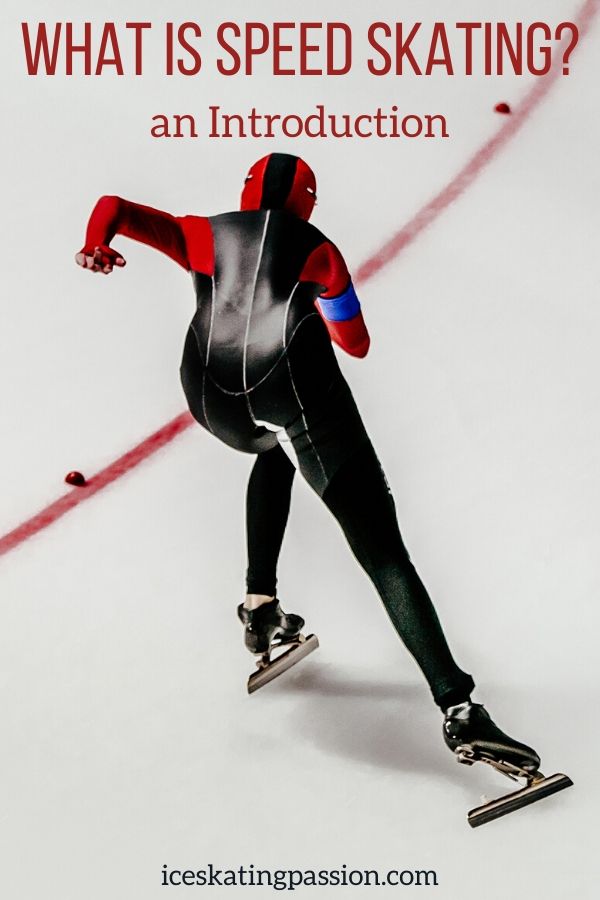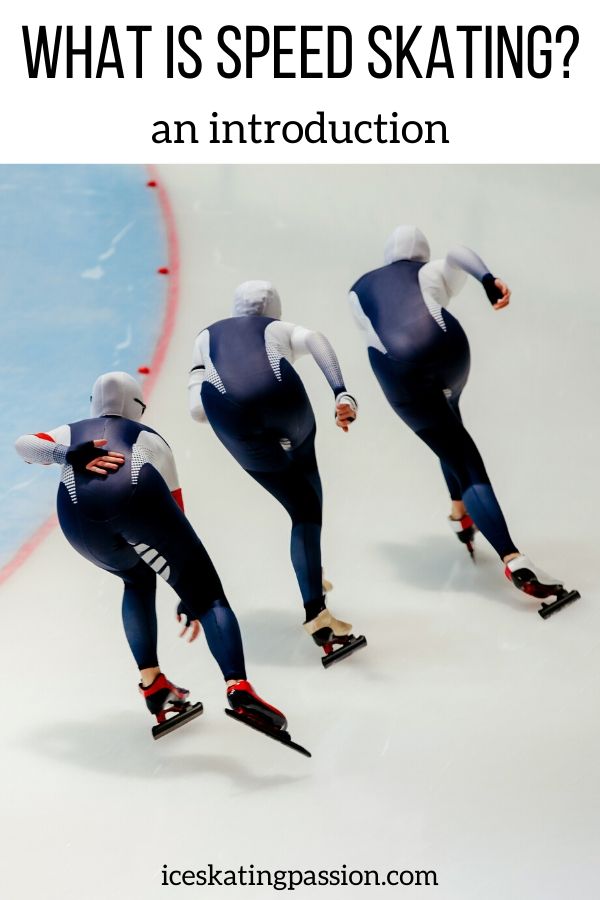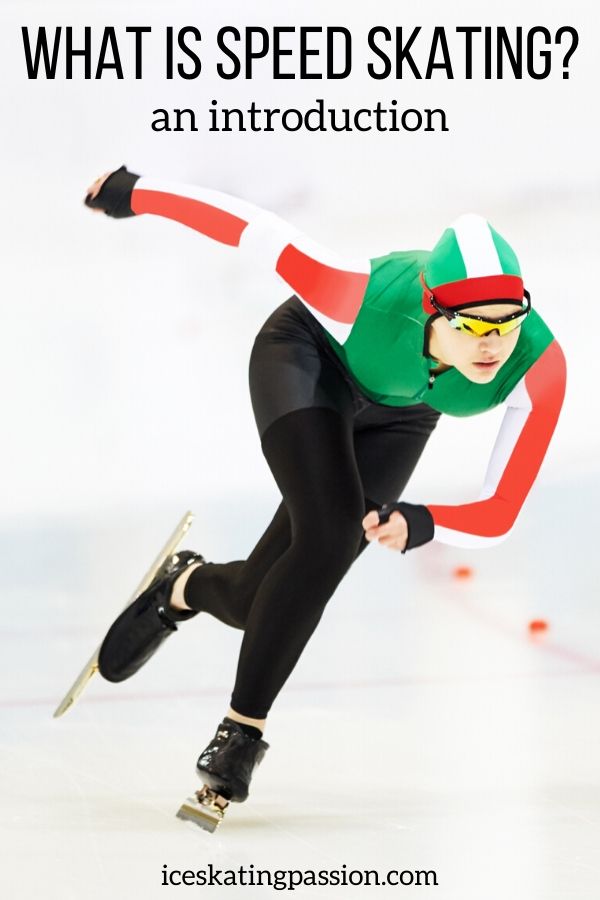Want to understand what speed skating is? Below is an introduction to the sport including the various disciplines of short track, long track and pursuit. The basis to better appreciate this racing competitive Olympic sport.
This article may contain affiliate Links (info on the Disclosure page). If you purchase using my link, I get a commission at no extra cost to you.
What is speed skating?
A racing sport
Speed Skating is a competitive form of ice skating within an oval or circuitous track - the goal is to complete the circuit in the fastest time possible.
There are two lanes – inner and outer. Swapping of lanes occurs several times. This enables each competitor to cover the same distance. Sometimes, there is a confrontation at a corner. The person on the outside lane has right-of-way.
The three kinds of ice speed skating are short track race, long track race and marathon. The ISU (governing body of this sport) calls long track races, speed skating. Short track events are short track skating.
How fast do they go?
The average speed is 30 miles per hour (48km/h). However, participants in the Winter Olympics managed 31 miles per hour (50km/h).
The short track is an oval one. It covers 111.2 meters (365ft). Competitors have to conduct rapid, sharp turns.
Therefore, even if right now it is not the most popular of the ice skating sports, it is a very impressive one.

Essentials to win a race
- Balancing – Bent knees enable maintaining a low center of gravity. Skaters can charge round corners speedily.
- Positioning – It is important for the skater to study his route beforehand. The individual in the inner lane has a greater advantage. Therefore, the competitor in the outer lane must rapidly adjust positions.
The disciplines: short track, long track, pursuit
Short track race
- The participants = 2 to 6 per race
- Track = is 111 meters in circumference (365ft)
- Length = 55m to 3 000m
- Move = counterclockwise
- Disqualification for false starts, cutting and impeding on the track.
Long track race
- The participants = Mass start 4 to 8 skaters or Olympic style with only 2 skaters racing
- Oval track = 400 meters in circumference (1312ft)
- Length = 100m to 10 000m
- Move = counterclockwise
- Change of lanes after every lap.
- The person in the outer lane has right-of-way.
- Disqualification occurs for false starts, cutting or impeding.
- If a skater falls or misses the race, he may cover the distance again. Long track races are devoid of heats/finals.
- Every ranking depends upon time.
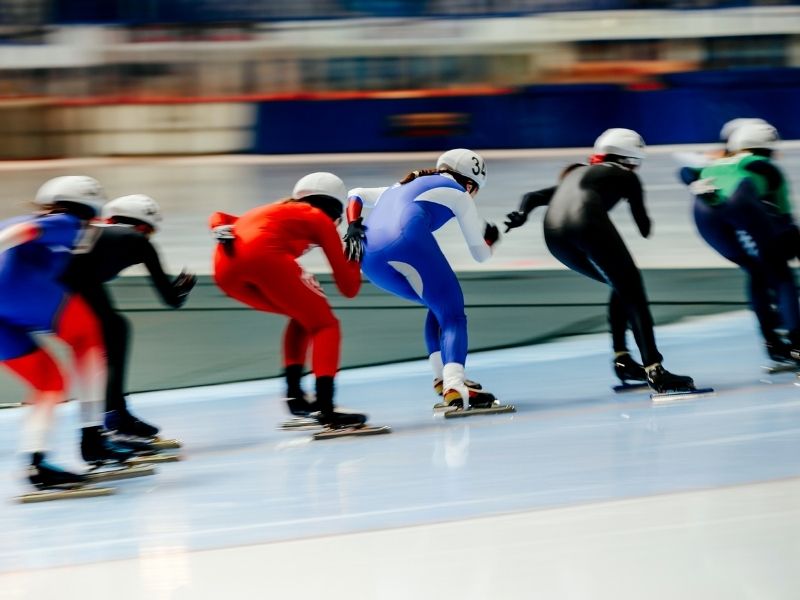
Long track team pursuit
- The participants = 2 teams per race, each one comprises 3-4 participants.
- Each team stands at opposite ends of the inner lane.
- Reaching the finish line is important.
- The clock decides the winning team.
History - speed skating introduction
Origins
In fact, ice skating began over 1000 years ago! The credit goes to the Scandinavians and the Dutch, specifically. The lakes, rivers and canals of Northern Europe would freeze over during winter. The natives would affix bones to their footwear and travel over them.
King Eystein I (Eystein Magnusson) of Norway loved traveling on ice legs too and enjoyed racing.
And, in 1592, a Scotsman gave a new definition to the sport of skating. He created a skate possessing an iron blade. The blade helped the user to traverse with speed.
First club / race
The Skating Club of Edinburgh came into being in 1642.
The sport became a competitive one in 1763. Wisbech on the Fens, England, hosted a global ice speed skating race for men.
Women entered the competition arena only in February 1805. The location was Heerenveen in The Netherlands. Trijntje Pieters Westra was the winner.
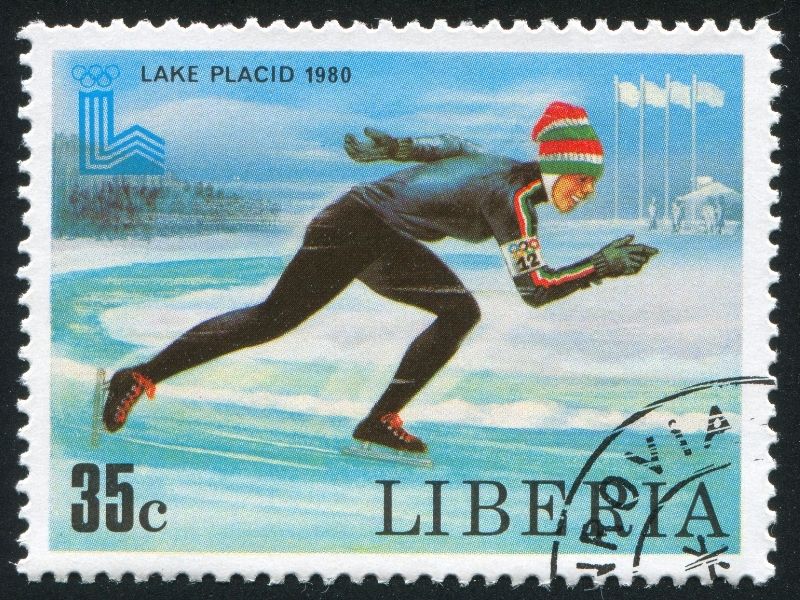
Development
By the middle of the 19th century, the sport became popular in the US and in Norway. The U.S. had developed an all-blade steel.
The next exciting event was the world championship in 1889, in The Netherlands.
Just a few years after, in 1892, the International Skating Union (ISU) was created in The Netherlands, including speed skating.
Olympic History
The 1908 Olympics permitted figure skating shows.
In 1914, the Olympic Congress discussed entering Ice speed skating into the 1916 Winter Olympics. Unfortunately, World War I happened.
Therefore, the event only started at the 1924 Chamonix Olympics.
After this, ice speed skating became a regular feature of the Winter Olympics.
Short track speed skating made an entry in 1992.
Timing was an issue before the 1960s. The arrival of electronic timers resolved the issue.
Find great gifts for yourself and your speed skating friends!
Basic rules
The rink
The ISU (International Skating Union) offers certain standards for setting up a long track ice speed skating track:
- The track has to have two lanes (each 4 m wide).
- Each lane must display a curve of 180° at the end.
- The inner radius should be between 25 m and 26 m only.
- At the opposite straight of the finishing line, there is a crossing area, where the skaters must change lane.
- At international races, the track must be 400m long (1312ft)
- At the Olympics, it must be indoors
For short track races:
- The track is 111 meters in circumference (365ft)
- It is set up in a traditional Olympic size ice skating rink (used for figure skating and hockey) which is 60x30m (200ft x98ft)
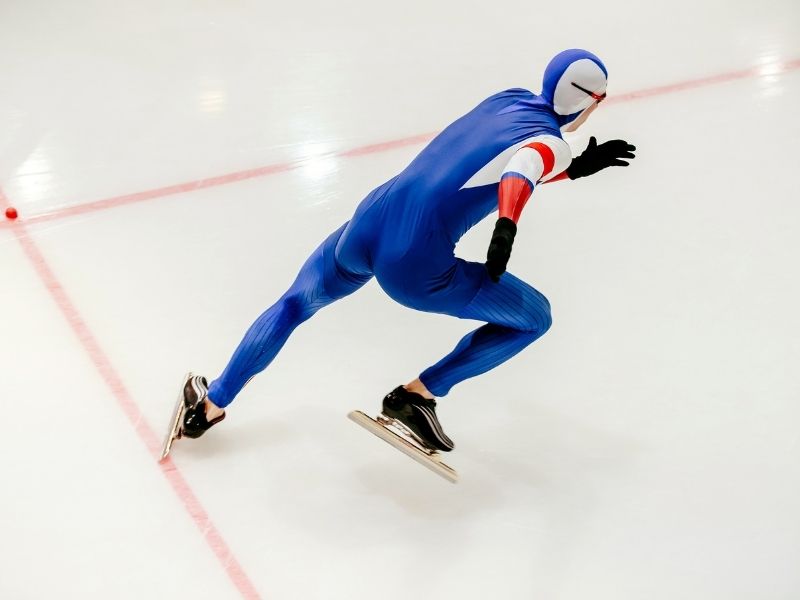
Races' rules
The starting line
- The signaler stands there, gun in hand.
- No participant can move until the starter fires the gun.
- A false start earns the defaulter a warning.
- More than one false start leads to disqualification.
The Lanes
- No skater may change his/her lane when nearing the finishing line.
- Sometimes, the competitors are together at a corner. Then, the person in the outer lane has the right of way. The skater in the inner lane may not try to impede the progress of his/her opponent. This can lead to disqualification.
Miscellaneous Rules
- If a competitor falls down, he/she may run the race again, depending on the type of race
- Sometimes, a skater may request a replacement or relay player. This is permissible only if this participant has covered at least one lap of the race.
Scoring
Ice speed skating does not go in for heats or final races.
The event begins straightaway, with a simple rule. He/she, who touches the finish line, first, wins the race.
Sometimes it is against each other, sometimes it is the clock defining the results over several races.
Skates and equipment
Skates
Ice speed skates resemble shoes, with cuts at the ankles (different from figure skates and hockey skates). This permits greater ankle compression. Furthermore, the blades tend to be anywhere between 30-45 cm. Adjustments are in alignment with height and age.
- Clap skates are long track skates. They affix themselves to the fronts of the boots. The boots’ heels move freely with every stroke. The spring mechanism aligned to the front connector creates these movements.
- Short track skates attach themselves firmly to the boots. One fixture is at the heel. The other is directly behind the ball of the skater’s foot.
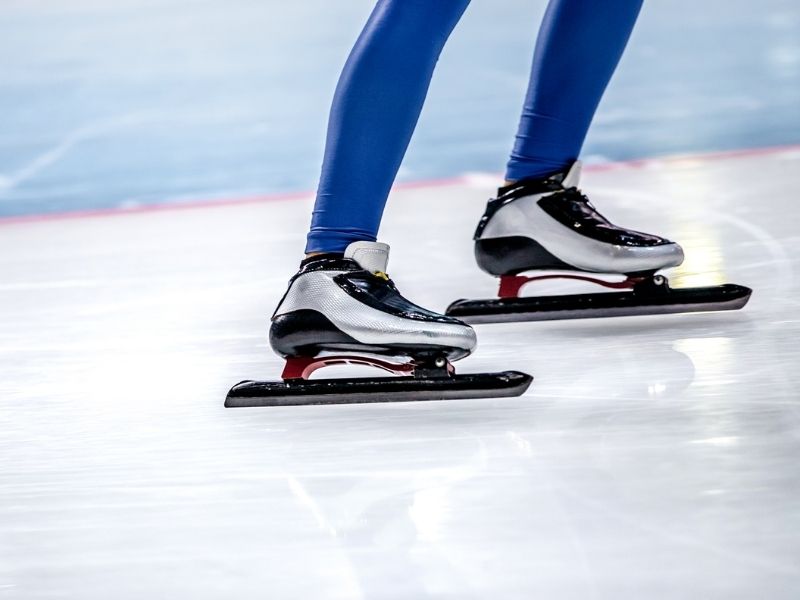
Suits
Competitors require protection against the cold. Comfort is another issue. The suits must enable high-speed travel. It is why the suits are skintight in nature. They permit low air resistance. Kevlar provides additional protection.
Protections
It is compulsory for every ice speed skater to wear a special Kevlar suit. Its design provides protection against the opponent’s blade.
Other protective measures include –
- a helmet
- a bib-style neck guard
- special eyewear
- cut-proof skating gloves
- carbon fiber tips or smooth ceramic on the left hand glove serves to lessen friction when the hand touches the ice at corners (optional)
- shin pads and knee pads
- ankle protection

How to start?
Speed skates are very very special. Their very long blades and shorter boots are not ideal to learn ice skating.
Kids typically start with figure skates or ice skates to learn balance. See my article about the best toddlers ice skates.
Once the kid shows interest for racing and speed rather than jumping or playing with the puck, then speed skating should be considered.
Check if there is a club at the nearby rink, they will help you with the equipment needed and the training schedule.
Speed skating is a great sport to develop:
- endurance
- strength
- speed
- flexibility
Best speed skaters
- Many skaters from the Netherlands - they dominate the long track speed skating - both men and women - for example Ireen Wust
- In regard to short track, South Korea and China are leaders
Some famous US speed skaters include:
- Shani Davis - USA - 2006 gold medalist on the 1000m event and many other races
- Apolo Anton Ohno - USA - one of the most decorated American in the Winter Olympics
- Eric Heiden - USA - he won 5 gold medals at the 1980 Olympics
- Bonnie Blair - USA - 5 gold medals over 3 Winter Olympics
You might also be interested in:
